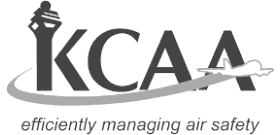 Kenya Moves to Ban Import and Registration of Fokker 27 and Fokker 50 Aircraft
Kenya Moves to Ban Import and Registration of Fokker 27 and Fokker 50 Aircraft
The Kenya Civil Aviation Authority (KCAA) has enacted a decisive ban on the importation and registration of the Fokker 27 and Fokker 50 aircraft, reflecting growing concerns over safety and airworthiness. This new directive, which takes effect immediately, marks a significant shift in Kenya’s aviation regulatory landscape—one that is set to have ripple effects across both domestic and regional airline operations, particularly as Kenya has long served as one of Africa’s key markets for these Dutch-built turboprops.
Despite their vintage, Fokker aircraft have played a pivotal role in Kenya’s aviation sector, valued for their reliability, affordability, and suitability for short-haul and regional routes. Currently, nearly 20 units remain active within the country, operated by around a dozen local airlines. These aircraft are a familiar sight at airports across Kenya, often connecting secondary cities and supporting logistics, humanitarian missions, and passenger services in areas where modern jet traffic remains thin or unsustainable.
The KCAA’s decision directly impacts several operators, most notably those who had pending delivery or expansion plans involving the Fokker 27 and Fokker 50 models. Renegade Air, for example, is set to feel the effects acutely, having anticipated the arrival of two Fokker 50 freighters to bolster its cargo offering. With the new ban, such fleet development plans must be swiftly reconsidered, potentially leading to contractual renegotiations or a shift toward alternative aircraft types.
Industry observers note that while the Fokker fleet in Kenya is aging, these aircraft have remained a backbone for both scheduled and ad-hoc flights, especially on routes where infrastructure challenges or limited passenger volumes render jet operations less practical. The ban could therefore drive a significant transformation in the local aviation ecosystem, prompting operators to accelerate fleet renewal strategies and consider new investments in more modern, efficient, and supportable turboprop or regional jet models.
In its announcement, the KCAA cited safety and navigability as central to the decision. Globally, the Fokker 27 and Fokker 50 lines have become increasingly difficult and costly to maintain, with supply chains for critical spare parts dwindling and fewer technical specialists available to support the aging fleets. The regulator’s proactive stance aligns with a broader trend across Africa, where aviation authorities are placing greater emphasis on modernisation to reduce operational risks and uphold international safety standards.
For operators still flying Fokker aircraft, the ban does not immediately ground existing units, but it does close the door to fleet expansion or replacement through additional imports. Maintenance, oversight, and the eventual phase-out of legacy airframes are now top priorities. This regulatory pivot may also prompt airlines to explore lease or purchase options for newer types, with a focus on aircraft that offer lower operating costs, better fuel efficiency, and stronger manufacturer support.
Kenya’s ban could set a precedent for other sub-Saharan African markets, many of which rely on similar legacy aircraft for regional connectivity. Airlines across the continent will be watching closely, weighing the need for rapid adaptation against the realities of capital constraints, market demand, and the limited availability of affordable replacements.
For those in the African aviation trade, these developments highlight the growing imperative to stay ahead of regulatory changes and to anticipate shifts in fleet composition. The ban presents an opportunity for aircraft lessors, manufacturers, and service providers to engage with operators seeking to modernise. There’s potential for increased demand for ATR, Dash 8, Embraer, or other newer-generation turboprops and regional jets that can match the operational versatility of the Fokker but deliver enhanced performance and compliance with evolving safety benchmarks.
Infrastructure, financing, and training will also become focal points as airlines transition away from older aircraft types. The need for continuous professional development among maintenance crews and pilots, as well as investment in spare parts and support services, is likely to accelerate partnerships with international OEMs and technical schools. The ability to manage such transitions smoothly will be a key differentiator for airlines aiming to maintain reliable service and capture new market segments.
While the KCAA’s decision may disrupt immediate business plans for some operators, it signals a broader momentum toward fleet renewal and safety-driven reforms across the region. For airlines and industry partners, this is an inflection point—one that calls for innovation, agility, and strategic investment. As Kenya and its neighbours navigate this period of change, the focus will increasingly shift to building sustainable, future-ready aviation networks that can support the continent’s economic and social aspirations.
With Kenya’s skies preparing for a new generation of aircraft, the African travel and aviation ecosystem must remain agile, proactive, and ready to leverage the opportunities presented by evolving regulatory landscapes. The push for modernisation is set to shape fleet planning, route development, and customer expectations across the subcontinent for years to come.
